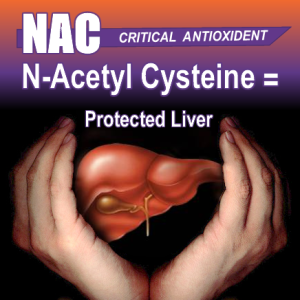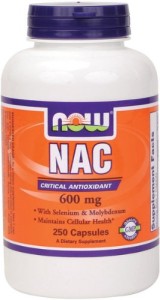By Ben Fuchs | Pharmacist Ben
– dedicated to Robert Y.
SUMMARY
· We have two nervous systems. One for handling stress (sympathetic) and one for relaxation (parasympathetic)
· Under normal healthy circumstances our body’s activities should be dominated by the relaxation nervous system based activity (activated upper digestion, relaxed lower digestion, lower heart rate and a sense of well-being)
· The signs of PTSD are the signs of an overactive sympathetic stress system
· Work mentally and emotionally first. Use hypnosis, visualization, religion, whatever it takes
· Deep breathing can be very effective. Stress and shallow breathing go hand in hand. Oxygenations the fastest way to activate the parasympathetic nervous system
· Nutrition and diet strategies can help too

By English: Cpl. Andrew Johnston [Public domain], via Wikimedia Commons
And you don’t have to be war veteran to suffer from PTSD. The same constellation of symptoms that affects returning vets can occur with victims of violence, sexual abuse, or emotional battering and mental harassment. Concentration camp victims and survivors of accidents and natural disasters are also prone towards the symptomology of PTSD. In fact, according to WebMD, over 5 million people in the United States are suspected of having some of the symptoms of PTSD which can be grouped into three general categories:
Reliving-(hallucinations, flashbacks),
Avoiding- (sense of detachment and isolation)
Increased arousal -(anger, jumpiness, anxiety, insomnia)
To understand PTSD, we have to understand the nervous system or more specifically, the nervous systems. Plural, because we have two of them. One which regulates the stress response is called the sympathetic nervous system (SNS). Constipation, oily, skin, insomnia, low sex drive and anxiety are all signs of an activated stress response nervous system. The second nervous system is called the parasympathetic nervous system (PNS). It regulates the relaxation response. PNS activation is manifested by relaxed lower digestion, activated upper digestion, lower heart rate, high libido and a sense of well being.
Under normal circumstances the body operates in a PNS dominant state. It would like to always be in a PNS dominant state. The sympathetic nervous system is an emergency system and chronic activation is bound to create mental emotional and physical health havoc. PTSD is a classic example of an SNS running amok. Consequently the best strategy for dealing with Post Traumatic Stress Syndrome is to return the body to a PNS dominant state.
Probably the most important therapy for dealing with PTSD and returning the parasympathetic to its rightful biochemical place as the dominant nervous system is to address the mental and emotional causes. Do not underestimate the importance of this component. Work with any mental and emotional strategies you can come up with. Meditation, visualization, hypnosis, Landmark Forum or God. It doesn’t matter. This is the most important component of dismantling of PTSD or any other emotional/mental health challenge.
Deep breathing can also be helpful. When the anxiety of PTSD kicks in the body tends to contract and breathing becomes more rapid and shallow. Contractions and rapid shallow breathing alert the adrenal glands to a threat and stress hormone kick in. This causes more shallow breathing and a further contraction old the muscles and connective tissue. Which causes the secretion of more adrenal stress hormones, which causes even more contraction and shallow breathing. The resultant downward spiral can continue unabatedly until it shows up as the chromic emergency type symptoms associated with PTSD. The key to breaking the spiral is to practice deep breathing. In fact, there is no faster way to activate the relaxation response than to deep breathe. For extra benefits, practice relaxing facial muscles on the exhale.
From a diet and nutritional standpoint, there are many strategies for activating the body’s PNS regulated response. Below are my Top 14 nutritional strategies for activating the relaxation response and dealing with PTSD:
1. Maintain stable blood sugar; eat more protein, less refined carbs. Refined food is also more likely to contain excitotoxins which can exacerbate anxiety.
2. Veggies and protein – Recipe for building serotonin, the body’s most important stress management biochemical. Starchy veggies and protein from whey and eggs can be especially helpful.
3. Lithium Oratate (5mg active elemental lithium) – mood stabilizing nutrient, used as prescription medicine, but available at a health food store, very relaxing.
4. GABA 100mg – (500 to 1000mg once or twice a day)-relaxing brain chemical, made by the body so there’s no toxicity.
5. Theanine (100-200mg 1-3 times a day)– an amino acid found in tea theanine has been shown in numerous studies to have psychoactive effects, thought to increase the brains levels of GABA, theanine may have excitoxicity benefits too. You can drink decaff green tea to bump up your theanine levels in the middle of the day.
6. Glycine (500 to 1000mg once or twice a day) -like GABA it’s a brain chemical and made by the body so there’s no toxicity. Whey protein is an excellent source of glycine.
7. Vitamin C (5-10 grams a day) – The quintessential anti stress vitamin. Deficiencies are common. The greater the stress the more you need. The more sugar you eat, the more you need. Take the powder and save money, 1teaspoonful = 5grams.
8. B-Complex (B-100 every few hours with water) with timed release niacin (100mg once or twice a day) – mood stabilizing, promotes serotonin synthesis.
9. 5HTP (100mg at bedtime) – precursor to serotonin, has anti anxiety and anti-depressant effects, take at bedtime.
10. Melatonin (3 mg at night)-major relaxation biochemical, anti-aging, supports immunity and digestive health as provides a sense of well being. Causes drowsiness, take at bedtime.
11. Beyond Tangy Tangerine – nutritional deficiencies =can trigger the symptom of PTSD. Sipping on Youngevity’s Beyond Tangy Tangerine all day long can prevent drops into nutritional deficiency status. [Buy Beyond Tangy Tangerine here]
12. Celtic Sea Salt – manna for the adrenal glands. Put a teaspoonful or two in a glass of water and sip on it, if it tastes delicious you’re adrenals are gonna love it! After a while, when it doesn’t taste as delicious you’ve had enough.
13. Magnesium (1200-2000mg a day glycinate form is the ideal.) Green veggies are a great source of magnesium. Involved in production of stress management hormones. Gall bladder or other digestive health problem may impair absorption. Take with apple cider vinegar, lecithin, digestive enzymes, bile salts, fatty meals to maximize absorption.
14. Inositol (500mg 2-4 times a day) – This vitamin-like substance improves serotonin’s stress management properties. High doses (18) grams a day shown to work as well as Prozac with no side effects.


 The 4th and most abundant tissue system is
The 4th and most abundant tissue system is 
 It can also improve lung function folks who are dealing bronchitis or emphysema or tuberculosis. And, it’s available in intravenous form as a medication called “Acetadote” which is used as an antidote Tylenol liver poisoning. According to an article published in the Cleveland Clinic Journal of Medicine, Tylenol or acetaminophen (which is the generic name for Tylenol) poisoning is the leading cause of acute liver failure in the United States, with nearly half of acetaminophen poisoning cases due to
It can also improve lung function folks who are dealing bronchitis or emphysema or tuberculosis. And, it’s available in intravenous form as a medication called “Acetadote” which is used as an antidote Tylenol liver poisoning. According to an article published in the Cleveland Clinic Journal of Medicine, Tylenol or acetaminophen (which is the generic name for Tylenol) poisoning is the leading cause of acute liver failure in the United States, with nearly half of acetaminophen poisoning cases due to 










